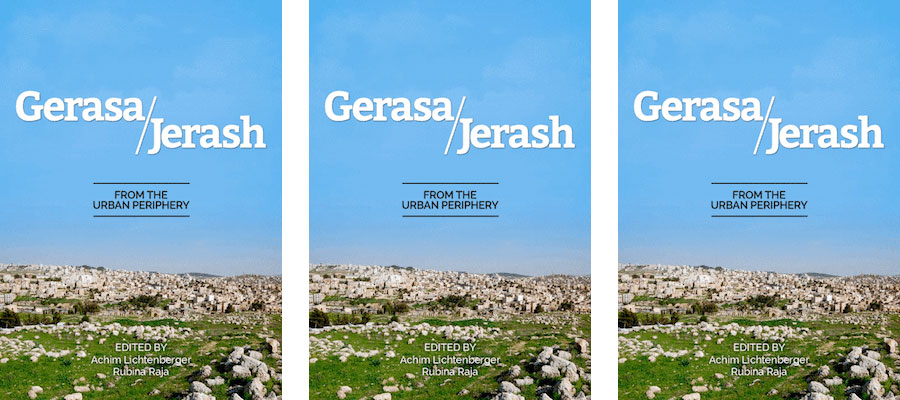Achim Lichtenberger and Rubina Raja, eds. Gerasa/Jerash: From the Urban Periphery. SUN-TRYK, Aarhus Universitet, 2017.
From Aarhus Universitet
Jerash – the Hellenistic and Roman city of Gerasa – was one of the most important cities of the Decapolis, a group of Greco-Roman cities in the southern Levant of which most were situated in today’s Hashemite Kingdom of Jordan. The city flourished into the mid-eighth century CE, when a devastating earthquake hit the region. Later in the Ayyubid–Mamluk period it was resettled, and archaeology also attests this period. More recent developments such as the urban expansion of the modern town have presented archaeologists with challenges, but Gerasa/Jerash remains the second most visited tourist site in Jordan due to its preserved and restored ruins.
Archaeological research has been conducted in Jerash by international teams for more than a hundred years. Since 2011, a Danish–German team has been working in the North-West Quarter of Jerash on a four-hectare area at the highest point within the walled city. While earlier research mostly focused on the major civic monuments of the city, the Danish–German Jerash North-West Quarter Project has investigated the periphery of the town, examining what may be learned about urban life in these areas and what the periphery tells us about Gerasa/Jerash as a city.
The Danish–German Jerash North-West Quarter Project was initiated by the editors of this book, and the first campaign took place in 2011. Over the years the team has grown considerably, and new funding has allowed for the implementation of high-definition methods such as geochemical analyses and high-resolution laser scanning, which have brought new insights into the site and its development. A variety of research aspects are presented in this volume by team members to accompany an exhibition at the Museum of Ancient Art, Aarhus University, opening in February 2017.
